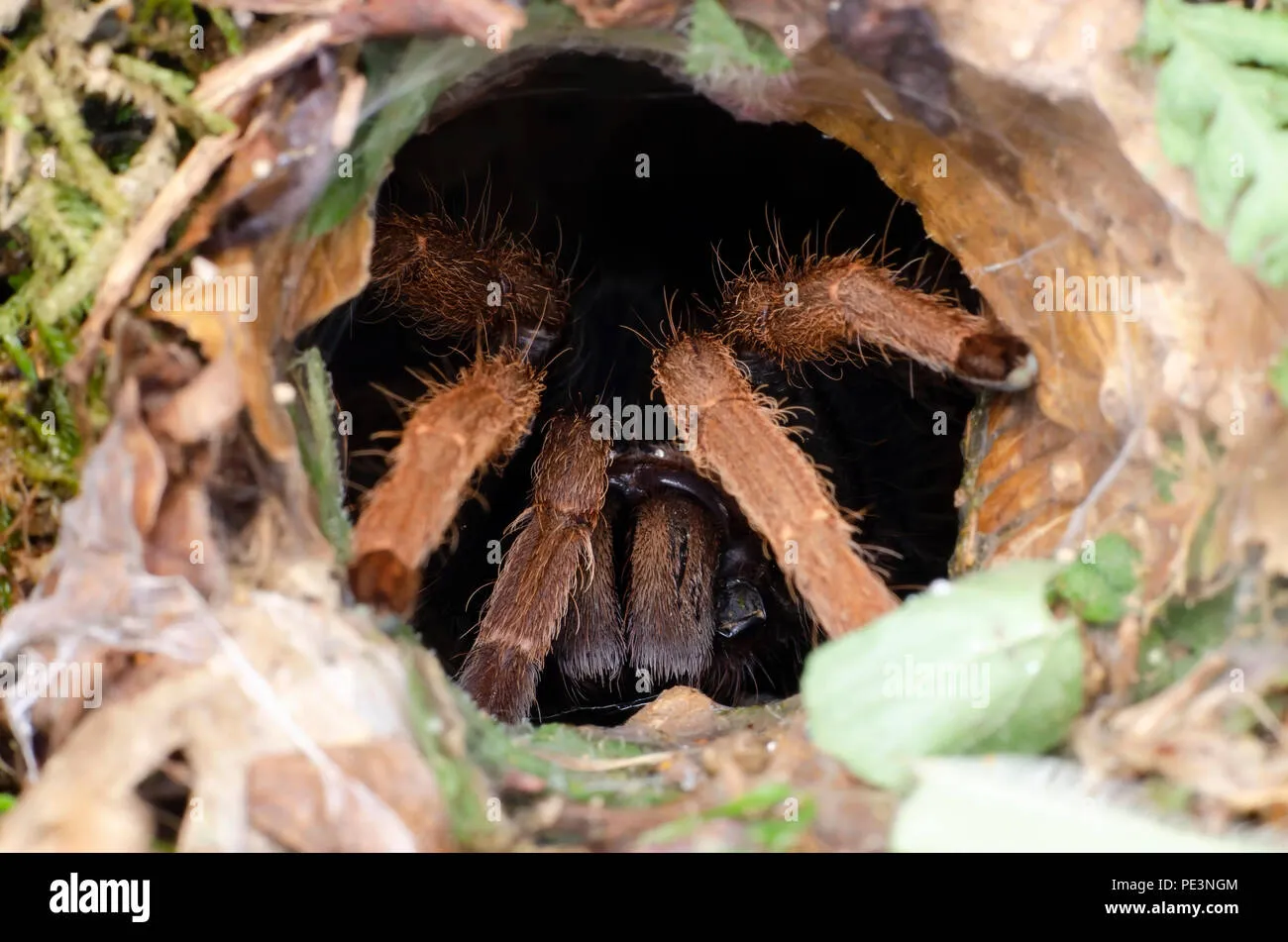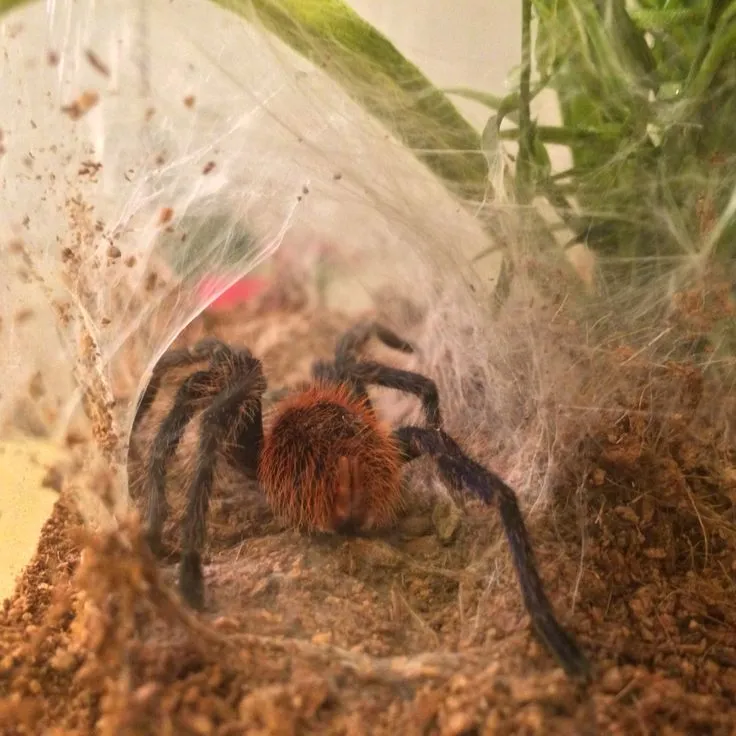Top 5 Tunnel Tarantula Facts
The tunnel tarantula, a captivating arachnid, often remains hidden from our view, dwelling in underground burrows and emerging primarily at night. These spiders, belonging to the family Cyrtaucheniidae, are fascinating creatures, and their unique adaptations and behaviors make them a subject of intrigue for both scientists and enthusiasts. This article will delve into five of the most captivating facts about the tunnel tarantula, shedding light on their remarkable lives and the critical role they play in their ecosystems. From their intricate burrowing habits to their potent venom and the conservation challenges they face, we will explore the world of these elusive spiders.
What is a Tunnel Tarantula?
Tunnel tarantulas are a group of mygalomorph spiders, known for their habit of living in silk-lined burrows in the ground. They are ambush predators, meaning they construct a burrow and wait for unsuspecting prey to wander within striking distance. These spiders are generally nocturnal, spending the day hidden within their burrows to conserve moisture and avoid predators. They are found in various regions worldwide, with different species adapted to their specific environments. Their burrows are often elaborate, with some species creating trapdoors to further conceal their presence. Their relatively large size and potent venom make them formidable predators in their ecosystems. They are a crucial part of the food chain, preying on insects and other invertebrates, and they, in turn, are preyed upon by larger animals.
Identifying Characteristics

Identifying a tunnel tarantula involves observing several key characteristics. Unlike some other tarantula species, these spiders are generally not as hairy. Their appearance can vary depending on the species, but they typically exhibit a range of brown to black coloration, which helps them blend in with their surroundings. They have large chelicerae (fangs) that they use to capture and subdue prey. Body sizes typically range from 1 to 3 inches, not including their leg span. The presence of a burrow with a silk-lined entrance is a telltale sign. It is crucial to observe these creatures from a safe distance. The best way to identify one is through its burrow. If you see a hole in the ground with a silk-lined entrance, it could be a tunnel tarantula.
Fact 1 Habitat and Burrowing
The primary habitat of tunnel tarantulas is underground burrows, which they construct in various soil types, from sandy to clay-rich. The construction of these burrows is a remarkable feat of engineering, with the spider using its chelicerae and pedipalps to excavate the soil and create a silk-lined tunnel. The burrows can extend several inches or even feet underground, providing shelter from the elements, a stable temperature, and a safe haven from predators. The entrance of the burrow is often camouflaged with leaves, twigs, and other debris, making it difficult to spot. Some species create trapdoors for enhanced security, which they can rapidly close when they sense danger or when prey is near. Their choice of habitat is heavily influenced by factors like soil moisture, prey availability, and the presence of predators. Their burrow construction is a testament to their adaptability.
Fact 2 Venom and Prey
Tunnel tarantulas, like all tarantulas, possess venom, which they use to subdue and digest their prey. The venom is delivered through their fangs when they bite their prey. While the venom of tunnel tarantulas is not typically considered lethal to humans, it can cause pain, localized swelling, and other discomforting symptoms. Their diet mainly consists of insects, such as crickets, beetles, and grasshoppers, but they will also consume other invertebrates that wander near their burrows. When prey comes close, the tarantula will swiftly ambush it, injecting venom to immobilize it. They then carry their prey back to their burrow to feed. The venom helps to pre-digest the prey, making it easier for the spider to consume. The feeding habits of tunnel tarantulas play a vital role in regulating the populations of insects in their habitats.
Fact 3 Lifespan and Growth

The lifespan of tunnel tarantulas can vary significantly based on the species and environmental conditions. Females generally live longer than males, often surviving for several years, sometimes even a decade or more. Their growth is a gradual process involving molting, where they shed their exoskeletons to grow larger. The molting frequency decreases as they mature. The process of molting is crucial for their growth. The spider will create a new, larger exoskeleton beneath its old one, then shed the outer layer, revealing the new one. During this time, they are vulnerable, and it’s essential to protect them. The growth rate depends on factors like food availability and temperature. Proper care and a suitable environment are essential for a long and healthy life. Throughout their lives, tunnel tarantulas undergo a number of molts, each one a step toward maturity.
Fact 4 Reproduction and Life Cycle
The reproduction of tunnel tarantulas involves a fascinating mating ritual. The male spider will often construct a sperm web, deposit his sperm, and then transfer it to his pedipalps. He will then seek out a female, and if she is receptive, the mating process begins. After mating, the female will lay eggs in a silken egg sac within her burrow. The number of eggs can vary depending on the species and the female’s size. The eggs incubate for several weeks, after which spiderlings emerge. The spiderlings stay with their mother for a while before dispersing to create their burrows. The young spiders go through several molts before reaching adulthood. The entire life cycle is a captivating example of adaptation and survival in the natural world. The cycle ensures the continuation of the species.
Fact 5 Conservation Status
The conservation status of tunnel tarantulas varies depending on the species and their geographic distribution. Habitat loss, due to urbanization, agriculture, and deforestation, poses a significant threat to their populations. The use of pesticides can also impact their prey base and directly harm the spiders. Some species are also collected for the pet trade, further threatening wild populations. Conservation efforts include habitat preservation, sustainable land management, and educating the public about the importance of these spiders. It is crucial to protect their habitats to ensure their survival. Responsible pet ownership can help to reduce the demand for wild-caught spiders. Monitoring their populations and understanding the threats they face are crucial steps toward ensuring their long-term survival. Research and conservation initiatives play a key role in safeguarding these amazing creatures.
Conclusion

Tunnel tarantulas, with their fascinating lifestyles and unique adaptations, are a testament to the diversity of life on Earth. From their subterranean burrows to their venomous fangs, these spiders have evolved to thrive in their specific environments. Understanding their habitat, behavior, and the threats they face is crucial for appreciating and conserving these remarkable creatures. By promoting responsible land management, supporting conservation efforts, and educating the public, we can help ensure that future generations can continue to be amazed by the tunnel tarantula and its captivating existence. They are a vital part of their ecosystem, and protecting them is important for the health of the planet.
